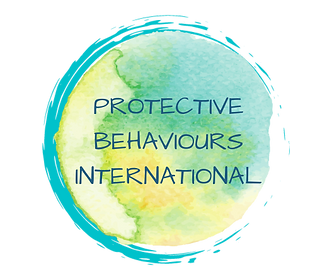Learning the language our bodies speak
- Bronwyn Clee
- Sep 15
- 3 min read
In our fast-paced lives, we often overlook the language our body speaks. This isn't merely about listening to our gut in a vague, abstract sense. It's about learning the cues and signals our body sends us every single day to tell us how we're doing. Long before our mind fully formulates a thought, our body communicates. There's a technical term for this known as interoception, which refers to our ability to notice internal sensations.
Consider how we notice feeling thirsty, hungry, a change in heart rate, tension in our shoulders, warmth, cold, or even a fluttering in our stomach. This is our body's language, spoken through sensations rather than words. By tuning into these cues, we can respond to what we actually need: whether that's to pause, speak up, move, hydrate, or rest, rather than simply reacting.
Understanding this language matters. From a Universal Protective Behaviours perspective, our right to feel safe includes recognising when we're not feeling okay, even in subtle ways. Ignoring these early sensations allows stress or discomfort to build until we're overwhelmed, unable to think clearly, and make rational choices. Noticing these signals in real-time allows us to adjust and course-correct gently before things escalate.
So, why do we miss these signals?
Well, we live in a world that rewards us for pushing through discomfort; for working through lunch instead of stopping to eat mindfully, and for ignoring back, neck, or shoulder pain to soldier on. Overriding tiredness to meet a deadline teaches our body that its messages don’t matter. Over time, these signals get quieter, only manifesting later as burnout, chronic illness, or emotional shutdown.
So, how do we change this? We can put protective interruptions in place and learn to listen without judgment. Paying attention to our body isn’t about labelling sensations as good or bad; it’s about gathering information. When we feel tension in our shoulders, it signals a need to stretch, breathe, or address the source of tension. Shallow breathing could mean our system is alert and needs reassurance.

As always, in this Blog Series "Feeling Safe and Standing Strong", we have two strategies you can take away and use:
1) The first is the hand-on-heart with statement practice. To practice this, simply place a hand gently over your heart and take slow, steady breaths. As you exhale, quietly say to yourself, 'I’m listening.' This simple yet powerful statement lets your body know its signals are welcome.
2) The second strategy is a seated micro-movement exercise. From a comfortable position, roll your shoulders back and down, tilt your head side to side, and stretch out your fingers and wrists. Notice any sensations as you do this. Even the slightest movement can help release tension. Repeat these movements, focusing on releasing tension.
Remember, our body is always speaking to us. The question is, are we listening?
By tuning in to our bodies, we build a relationship of trust with ourselves; one that helps us respond to our own needs with care and respect.
As always, if you found this article helpful, feel free to share it. Until next time, let’s keep listening to our bodies, honoring what they tell us, and allowing ourselves to feel safe and stand strong. We all have the right to feel safe.
Summary: Learning the language our bodies speak
The concept of Interoception is recognising internal sensations like hunger, thirst, tension, or heart rate changes.
Being attuned to these bodily cues helps us respond appropriately to needs, preventing stress and overwhelmed states by addressing discomfort early.
Ignoring such signals in a fast-paced world that values pushing through discomfort can lead to burnout and other chronic issues as the body's signals become quieter.
Two strategies to better listen to our body's signals are proposed:
Hand on heart practice with slow, steady breaths while saying "I'm listening" to affirm awareness of bodily signals.
Seated micro movements involving shoulder rolls, head tilts, and stretching fingers and wrists to release tension.
Emphasises the importance of listening to our body to build trust in oneself, leading to responding with care and respect.




Comments